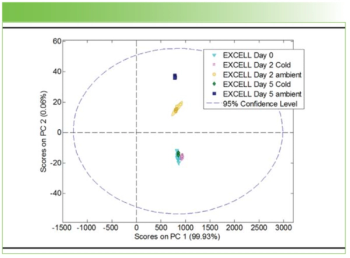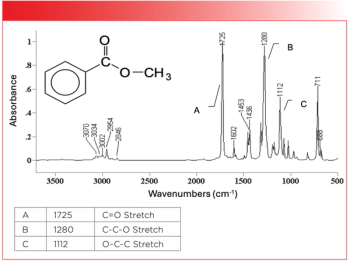
A Compilation of the Latest Business News in Spectroscopy
In this article, we examine some of the latest business news in the field of spectroscopy.
In the last decade or so, spectroscopy as a field has advanced rapidly, thanks to the technological advancements of components and computer technology and the demand draw for more precise analytical tools at production or manufacturing points across various industries. Several of these technological trends are resulting is the expansion or contraction of certain industries, requiring new workers with varied skillsets.
One important trend in the spectroscopy field is the rapid adoption and implementation of portable and miniaturized spectroscopic instruments. This trend has occurred because analysts desire more versatility in their spectroscopy instruments to provide analytical tools for field, factory, clinical, and consumer applications. Miniaturized spectroscopy devices allow the analyst to conduct on-site analysis ranging from industrial locations to remote field areas (1). The portability of these devices has helped improve quality control processes, environmental monitoring, and even healthcare diagnostics, enabling real-time data acquisition and decision-making (1).
Another trend we are seeing in the industry is the explosion of artificial intelligence (AI) and machine learning algorithms. Machine learning techniques improve the speed and accuracy of spectroscopic measurements, which is important for researchers and field analysts in gaining insights into complicated or incomplete data sets more efficiently. AI-driven spectroscopy not only streamlines data interpretation, but it also facilitates predictive modeling and anomaly detection, leading to improved product quality, process optimization, and detection of abnormalities in various applications.
Below, we have compiled a list of articles that highlight some of these trends in the spectroscopy industry, and how these developments are impacting the field now and in the future. Happy reading!
According to a recent report published by Allied Market Research, the global portable spectrometer market size is expected to grow from $1,675.7 million in 2020 to $4,065.7 million by 2030 (1). Read more about the portable spectrometer market at the above link.
Exum Industries, producers of the first laser ablation laser ionization time-of-flight mass spectrometry (LALI-TOF-MS), announced a partnership with Edge Scientific to better promote and distribute their products (2).
Exum Instruments is most well-known for its first technology, the Massbox, which is a LALI-TOF-MS instrument that is designed to analyze solid samples. The partnership will allow Exum Instruments to expand their reach in Canada, with Edge Scientific acting as their reseller (2).
At Analytica 2024 in Munich, Germany, several spectroscopic instrument manufacturers and vendors presented their latest instruments. The companies that presented their products at Analytica include but are not limited to Analytik Jena, WITec, Agilent, Bruker, Hamamatsu, Horiba, and Tosoh Bioscience.
An oral session at Analytica 2024 covered some of the most recent studies in the spectroscopy space utilizing new instrumentation. The techniques covered in this oral session include mid-infrared (mid-IR) spectroscopy, LA-ICP-MS, mass spectrometry, and X-ray fluorescence spectroscopy.
In a recent development that reveals how technological innovation is advancing the field of spectroscopy, Liquid Instruments recently integrated its Moku system with Apple Vision Pro (5). With this integration, users now can interact with multiple instruments using hand and eye gestures without the need for monitors. The goal of this integration, the company said, is to accelerate testing in optics, quantum, and photonics research laboratories (5).
References
(1) Chasse, J. Portable Spectrometer Market to Grow Past $4 Million by 2030. Spectroscopy. Available at:
(2) Chasse, J. Exum Instruments and Edge Scientific Partner to Distribute Exum’s LALI-TOF-MS Technology in Canada. Spectroscopy. Available at:
(3) Hroncich, C. 16 New Spectroscopy Products Showcased at Analytica 2024. Spectroscopy. Available at:
(4) Chasse, J. New Instrument Development in Spectroscopy. Spectroscopy. Available at:
(5) Wetzel, W. Liquid Instruments FPGA Technology Now Compatible with Apple Vision Pro. Spectroscopy. Available at:
Newsletter
Get essential updates on the latest spectroscopy technologies, regulatory standards, and best practices—subscribe today to Spectroscopy.





